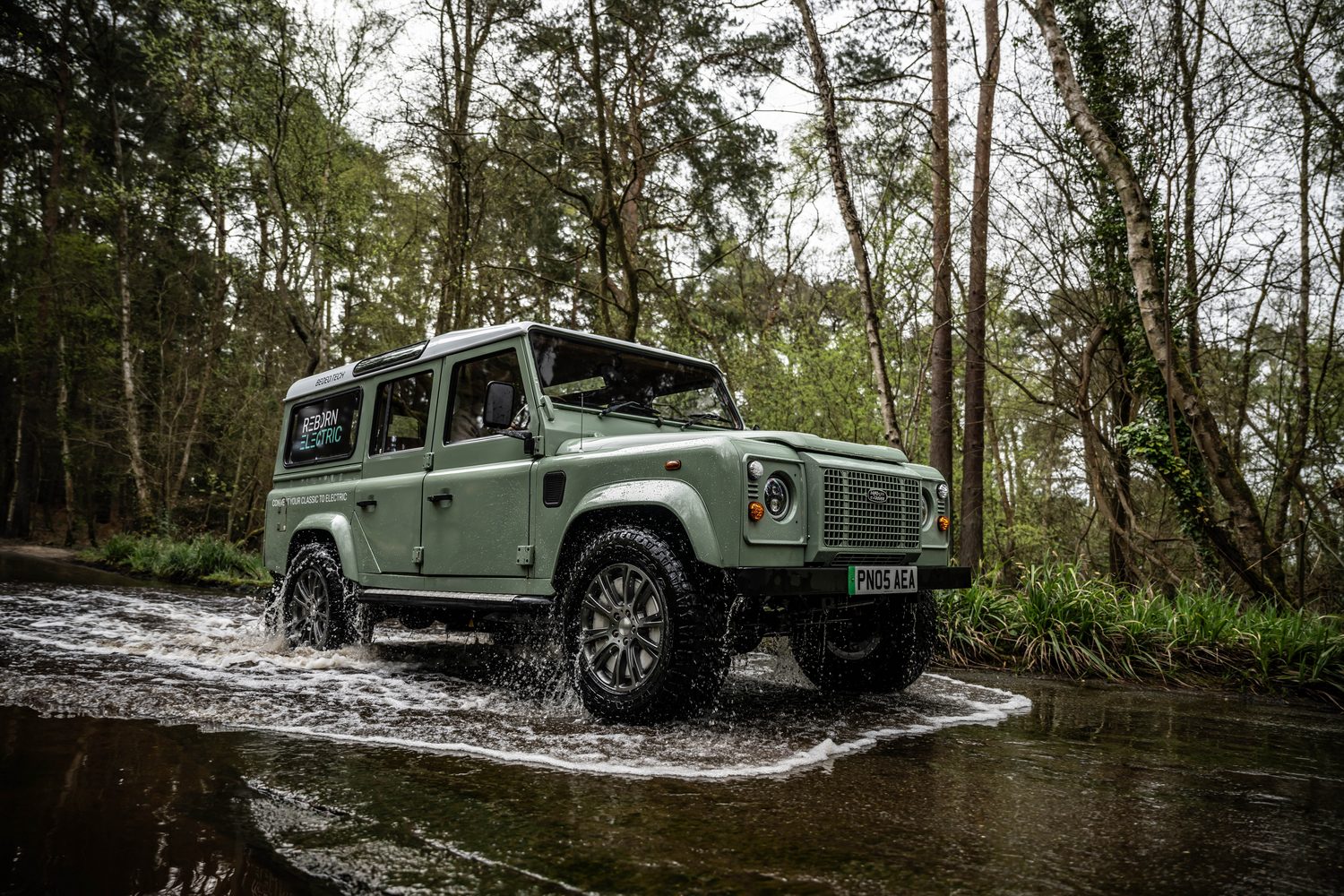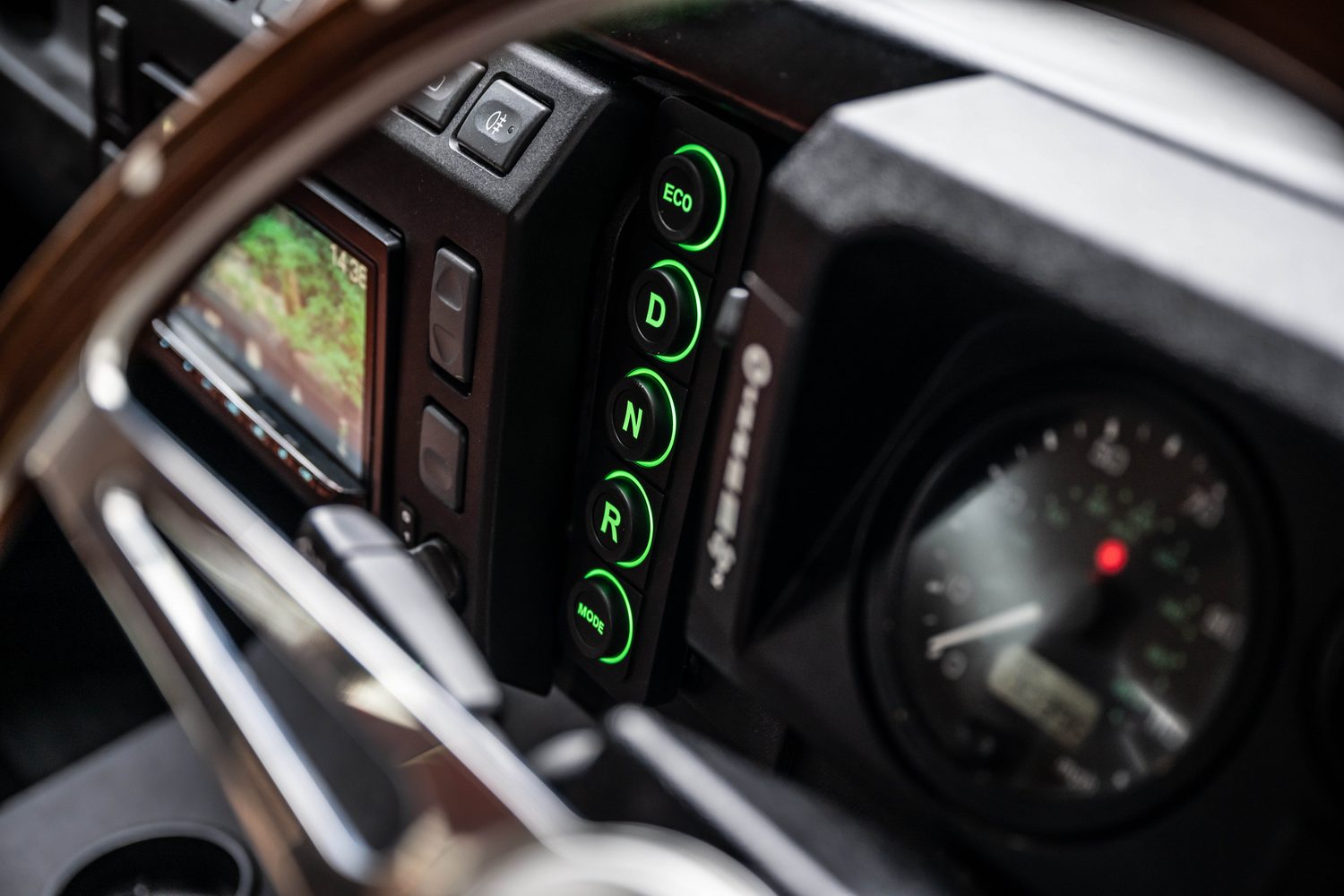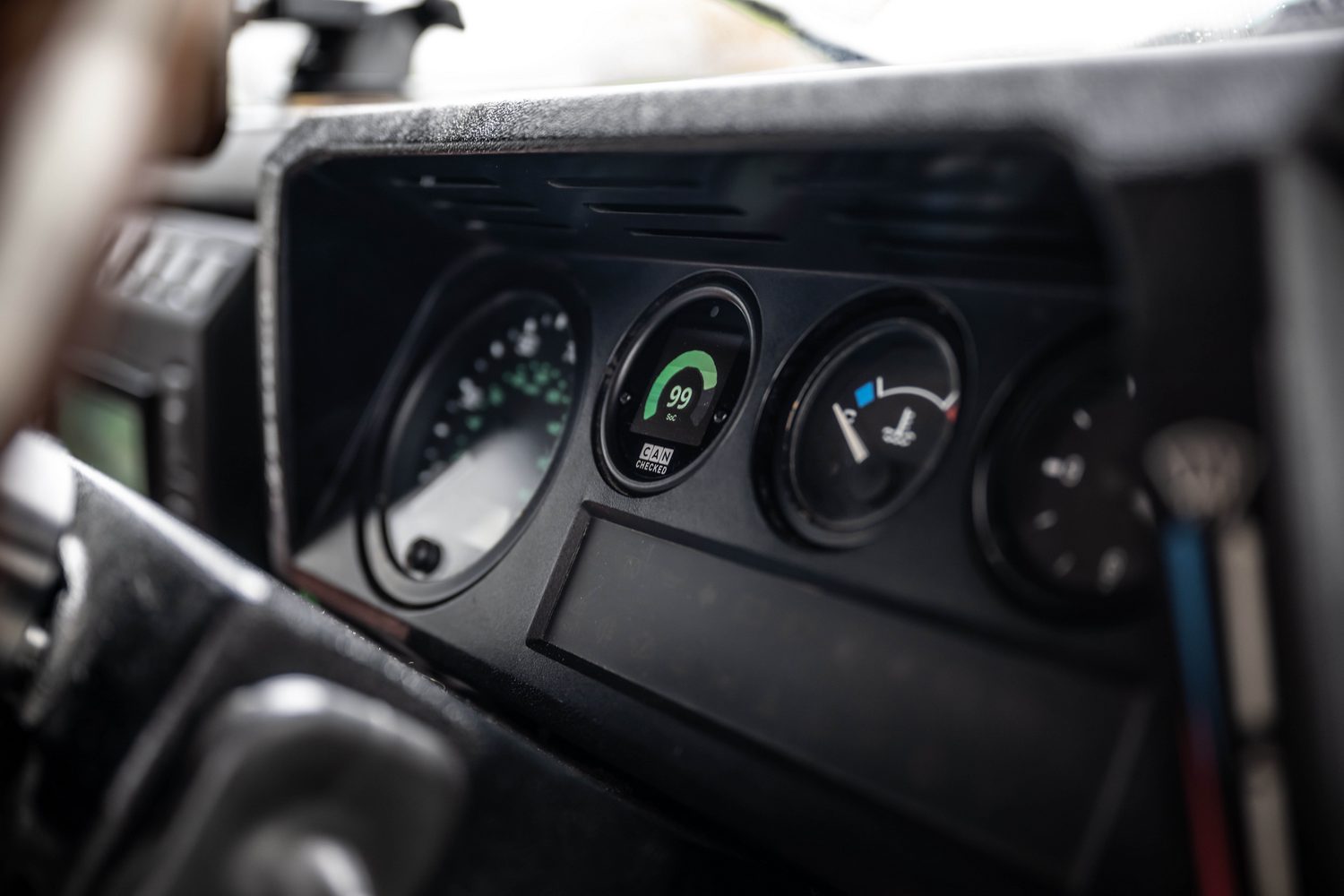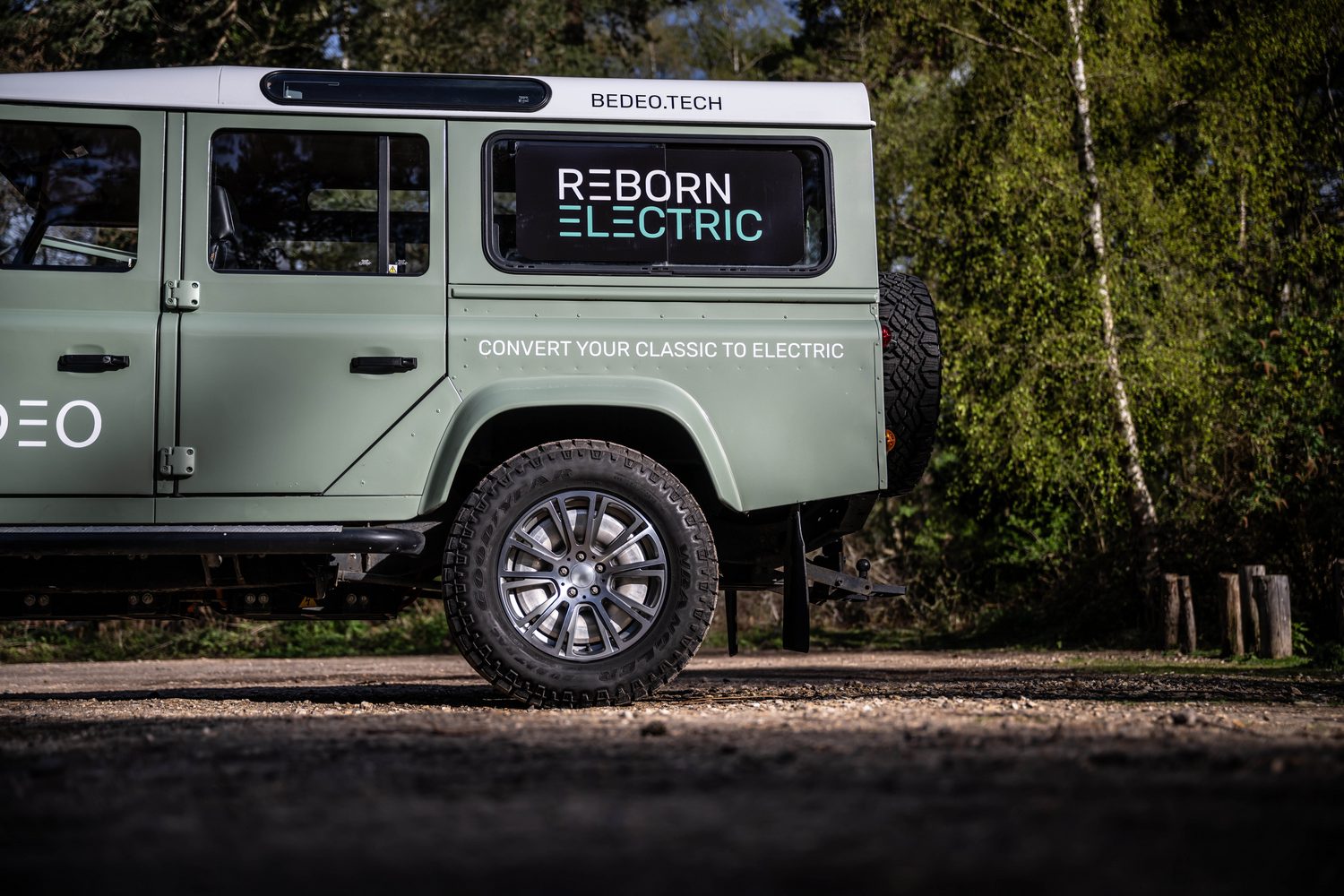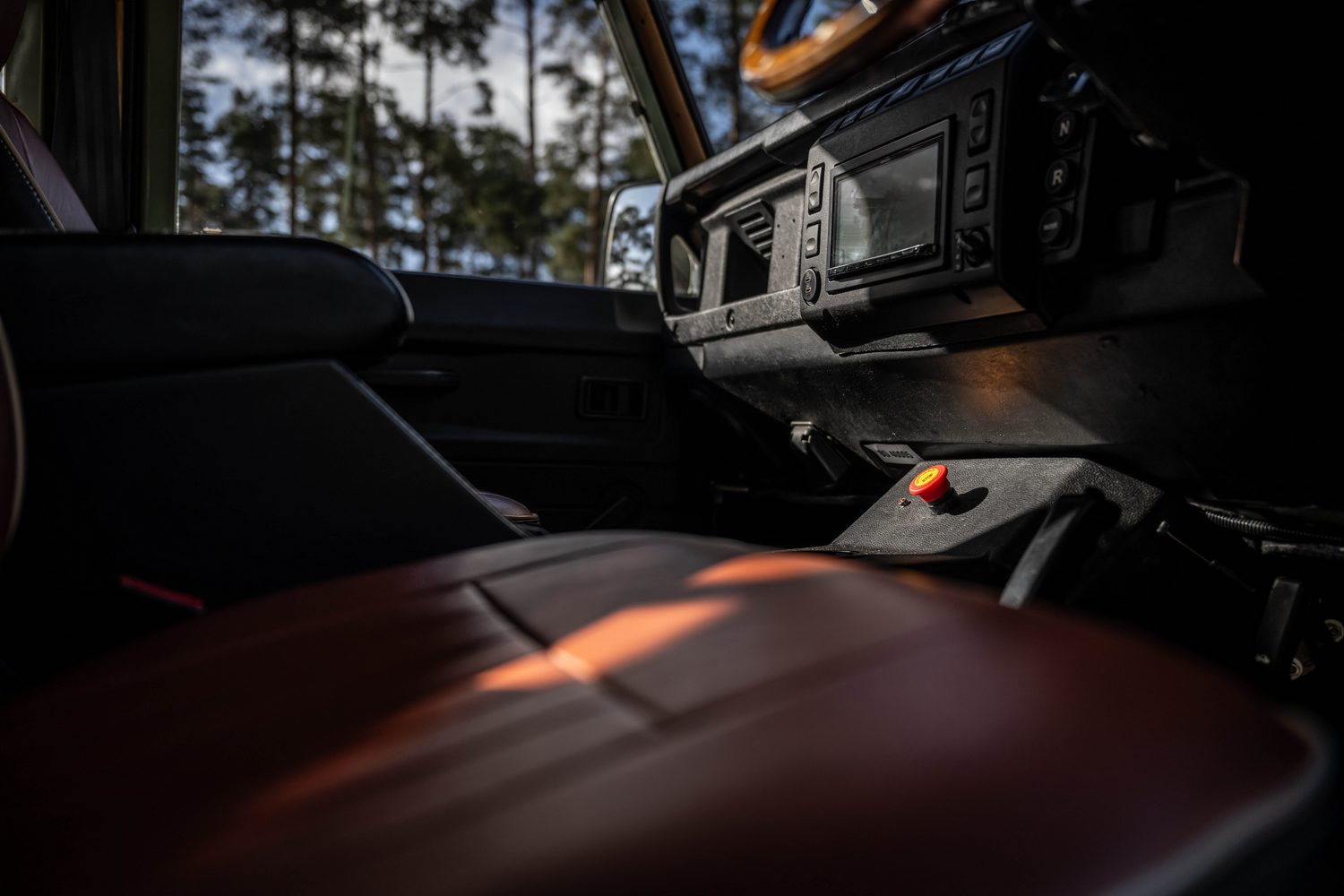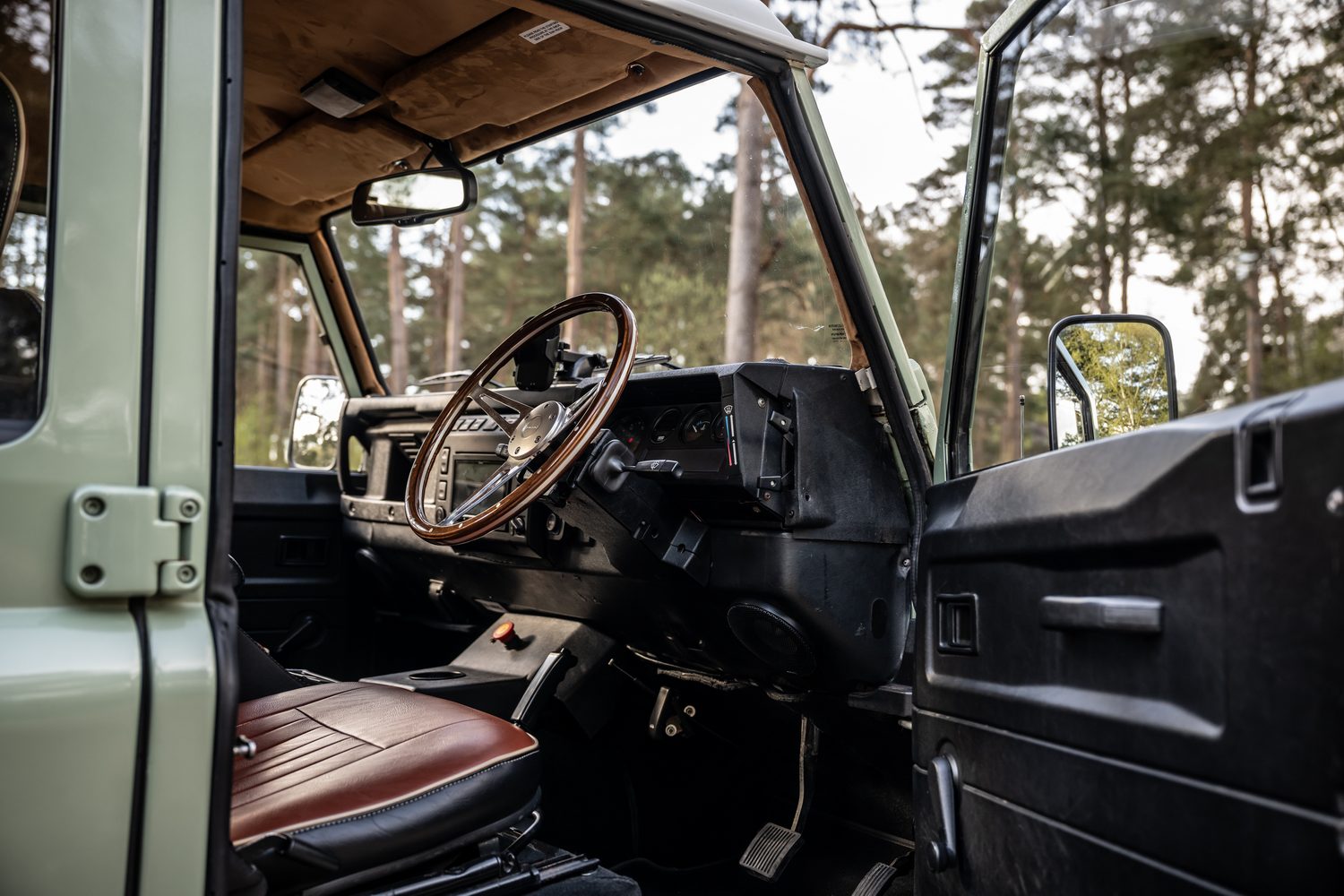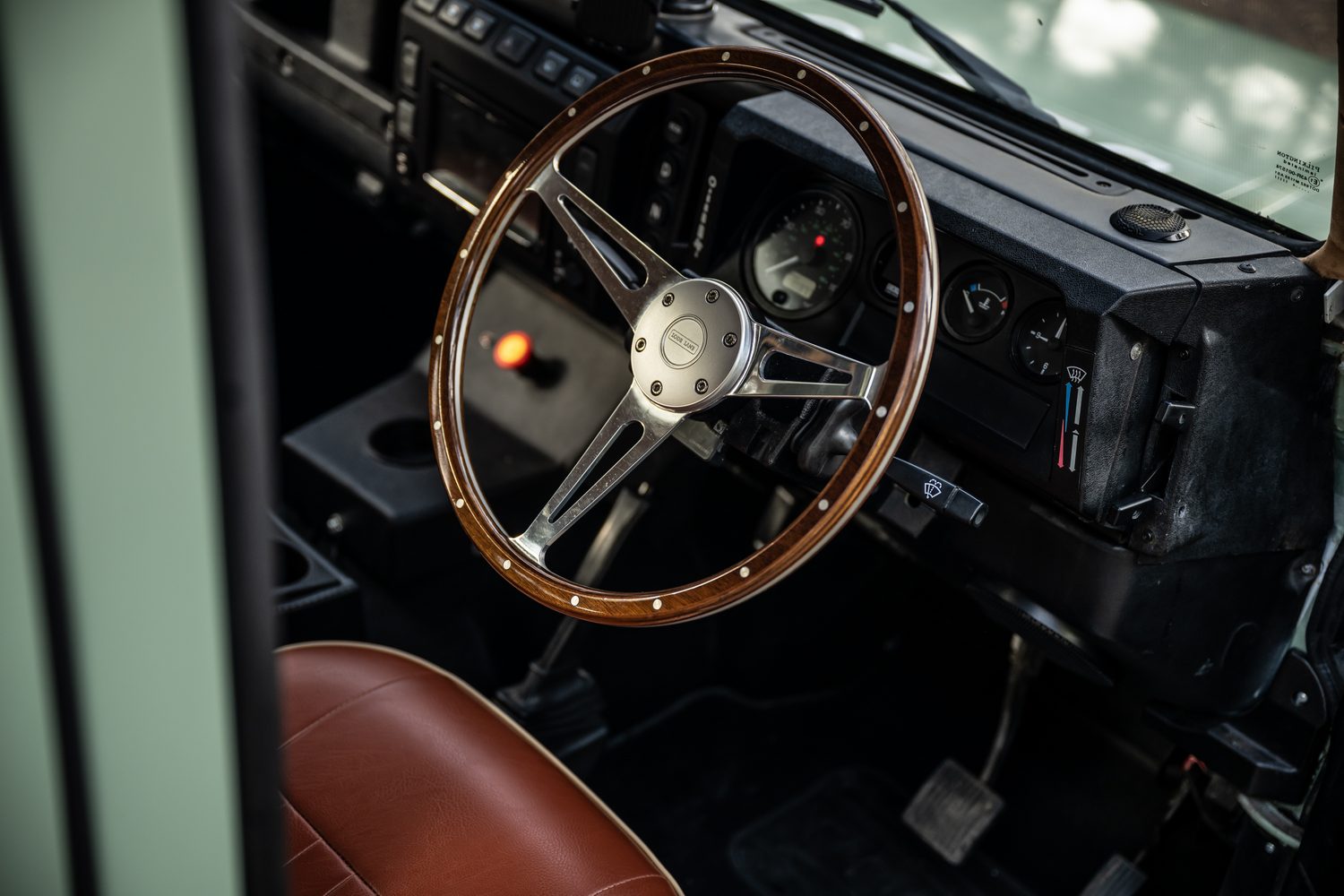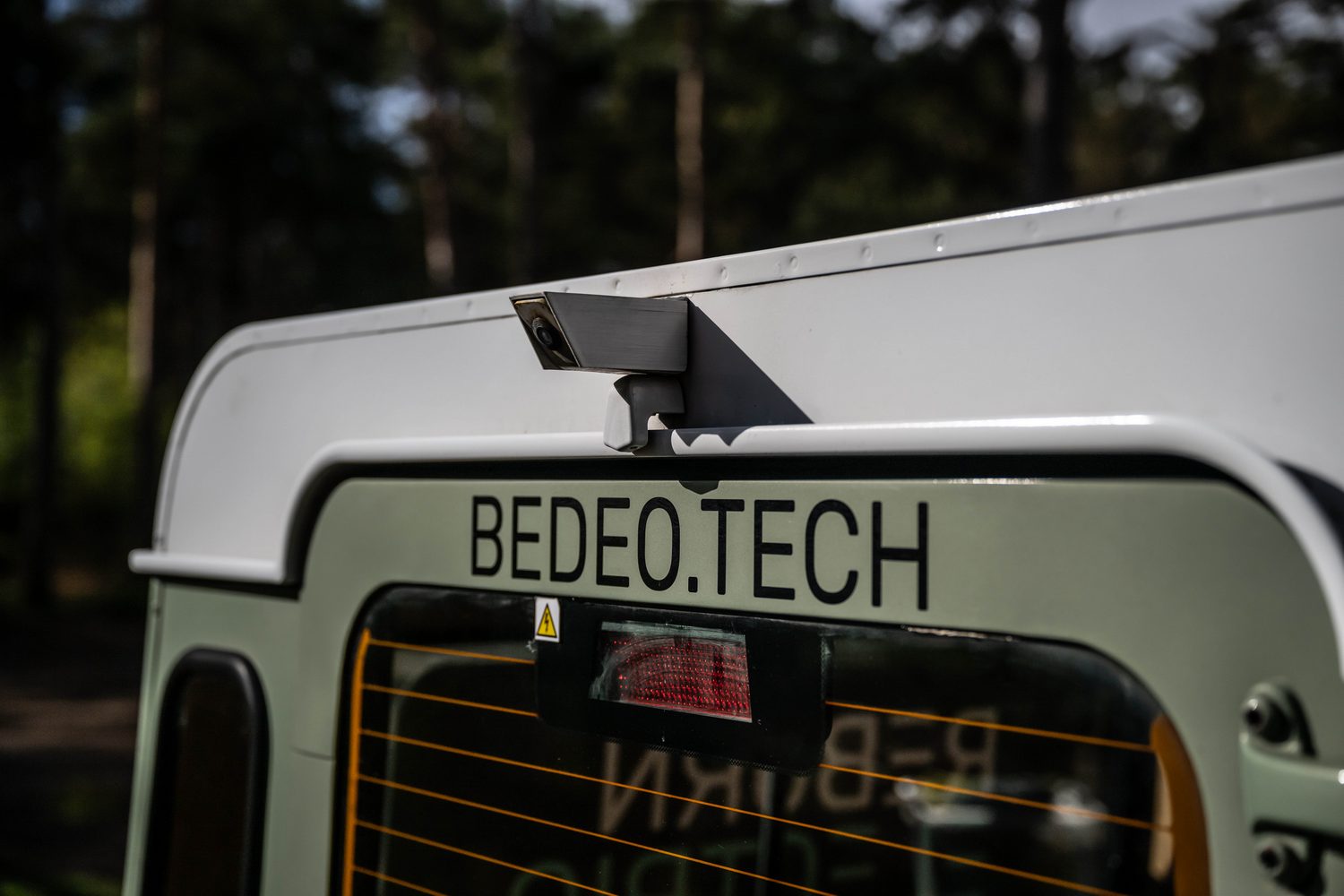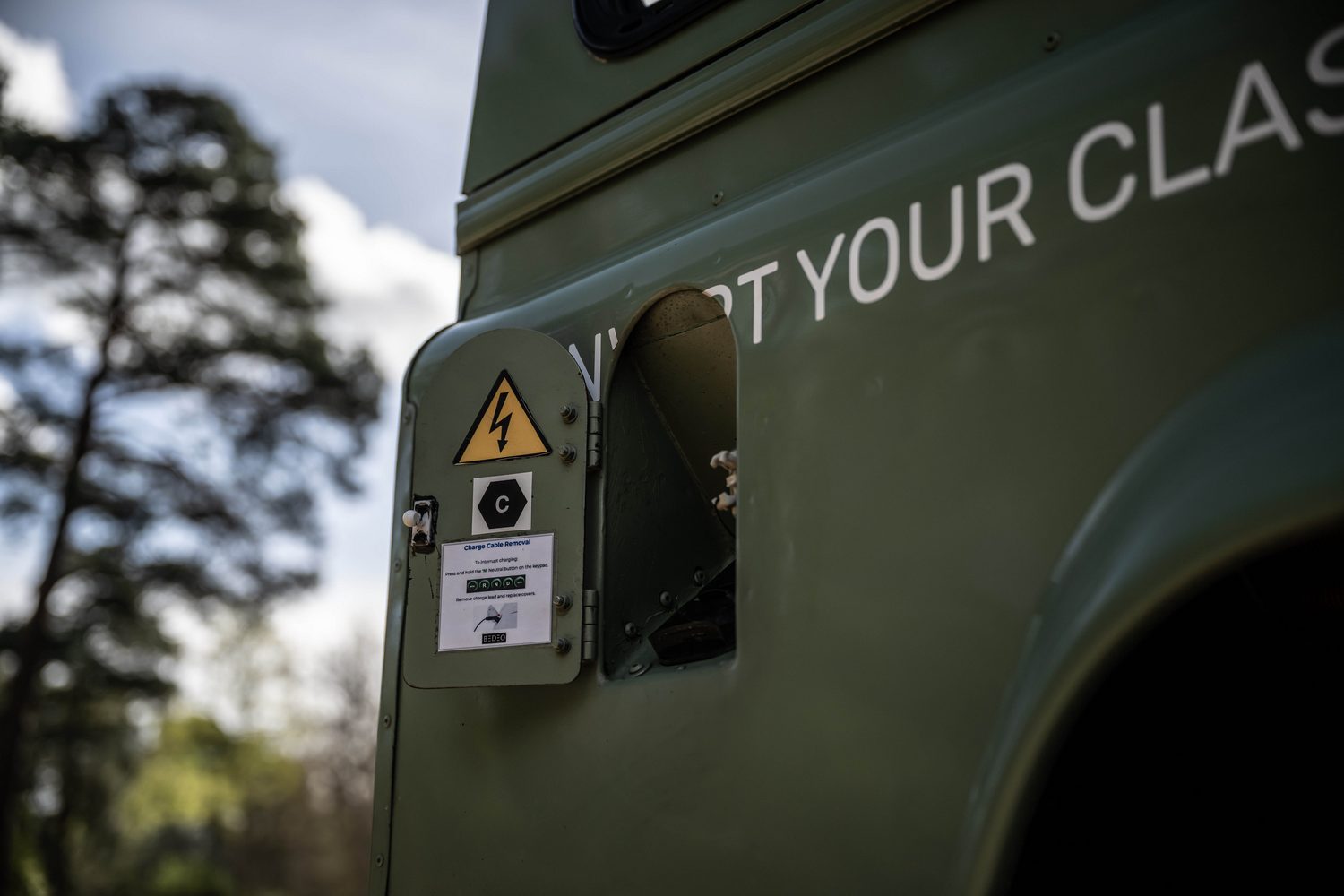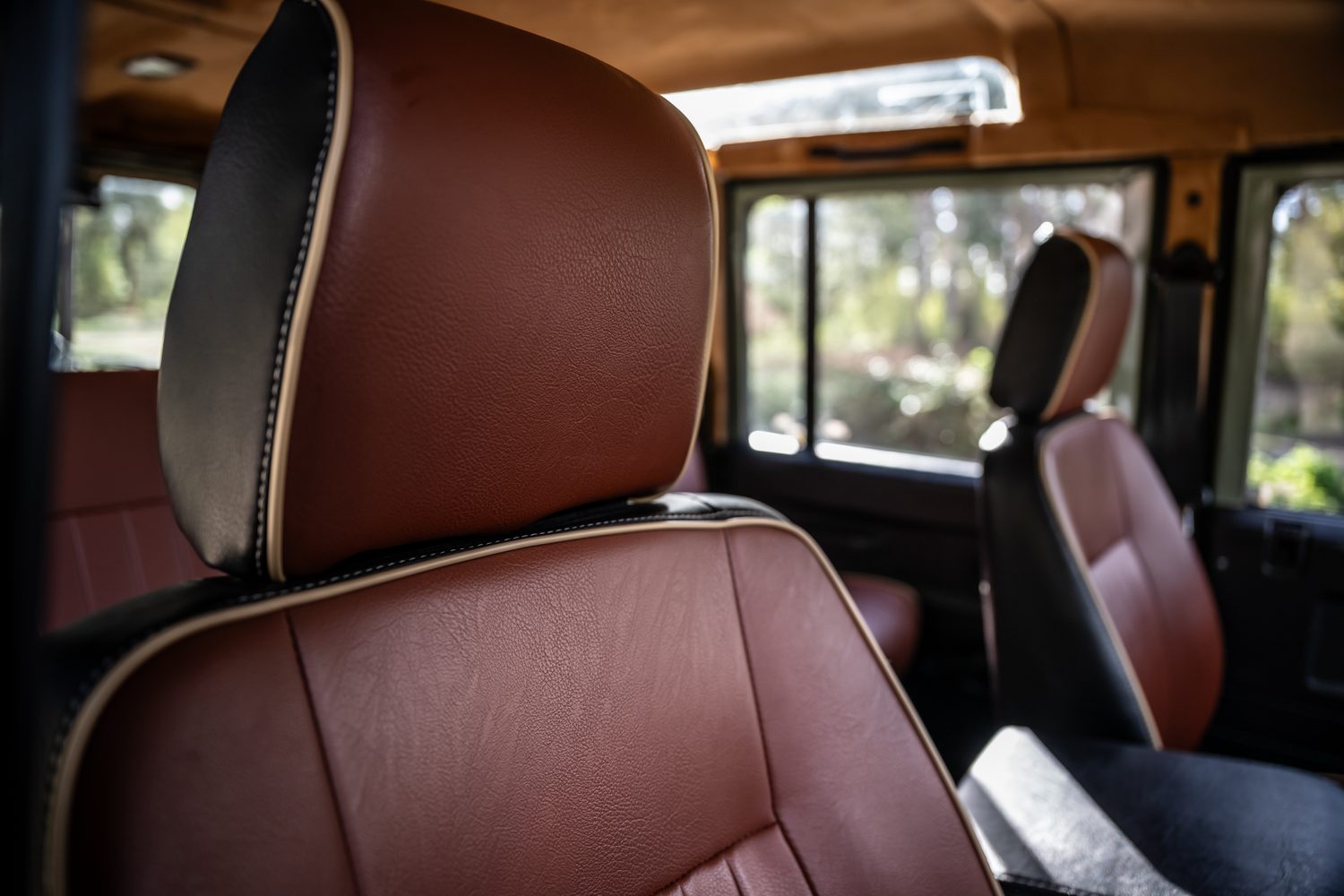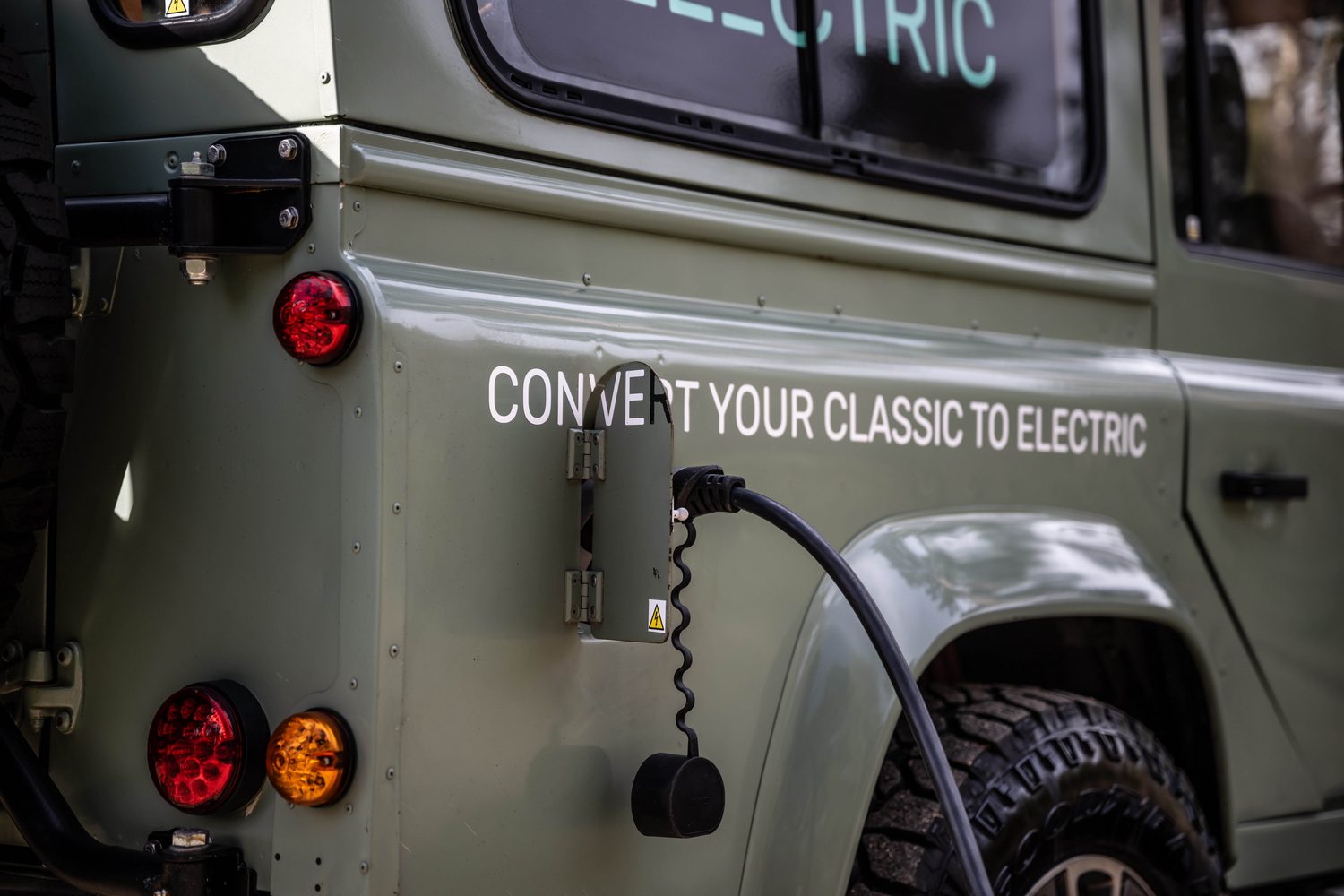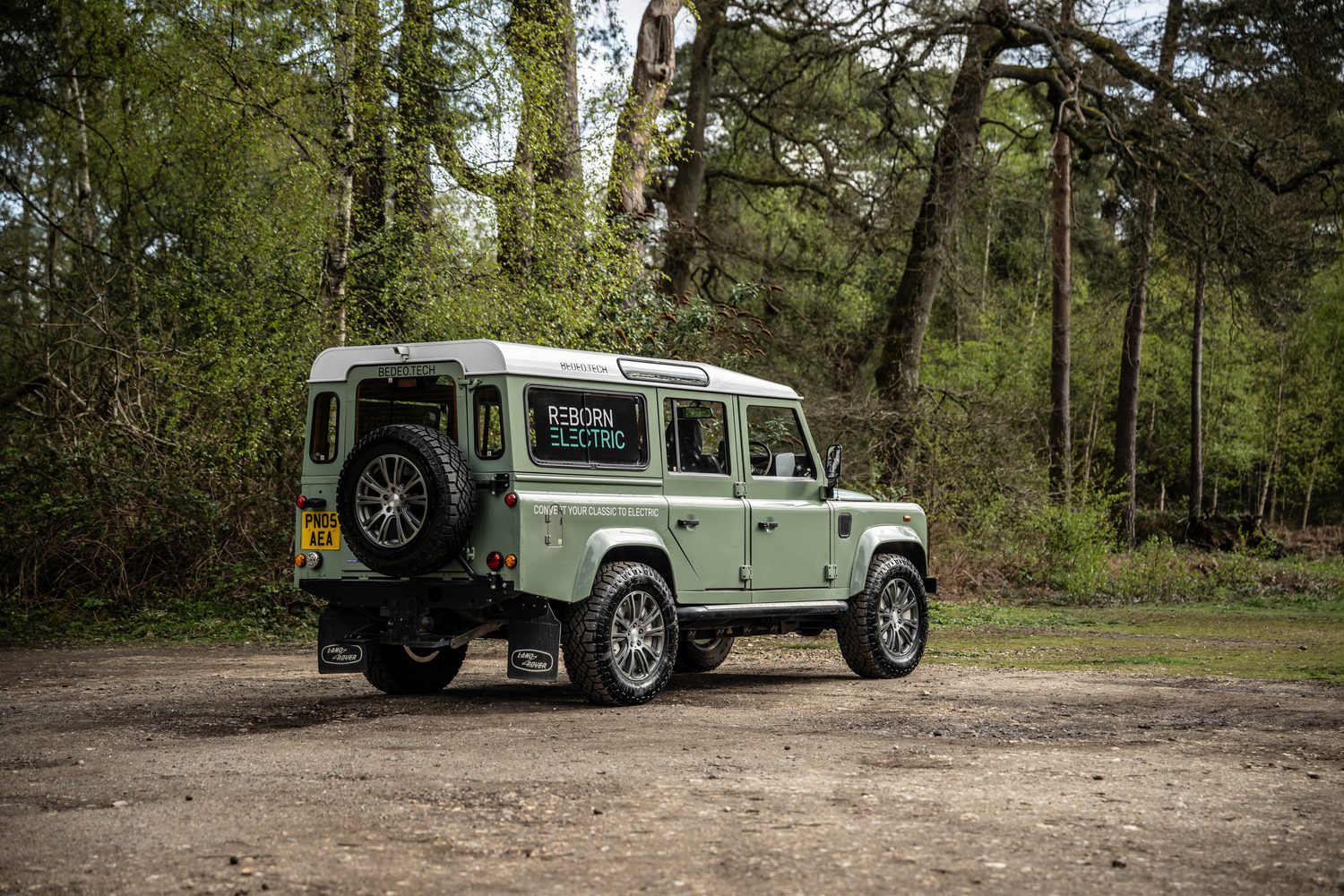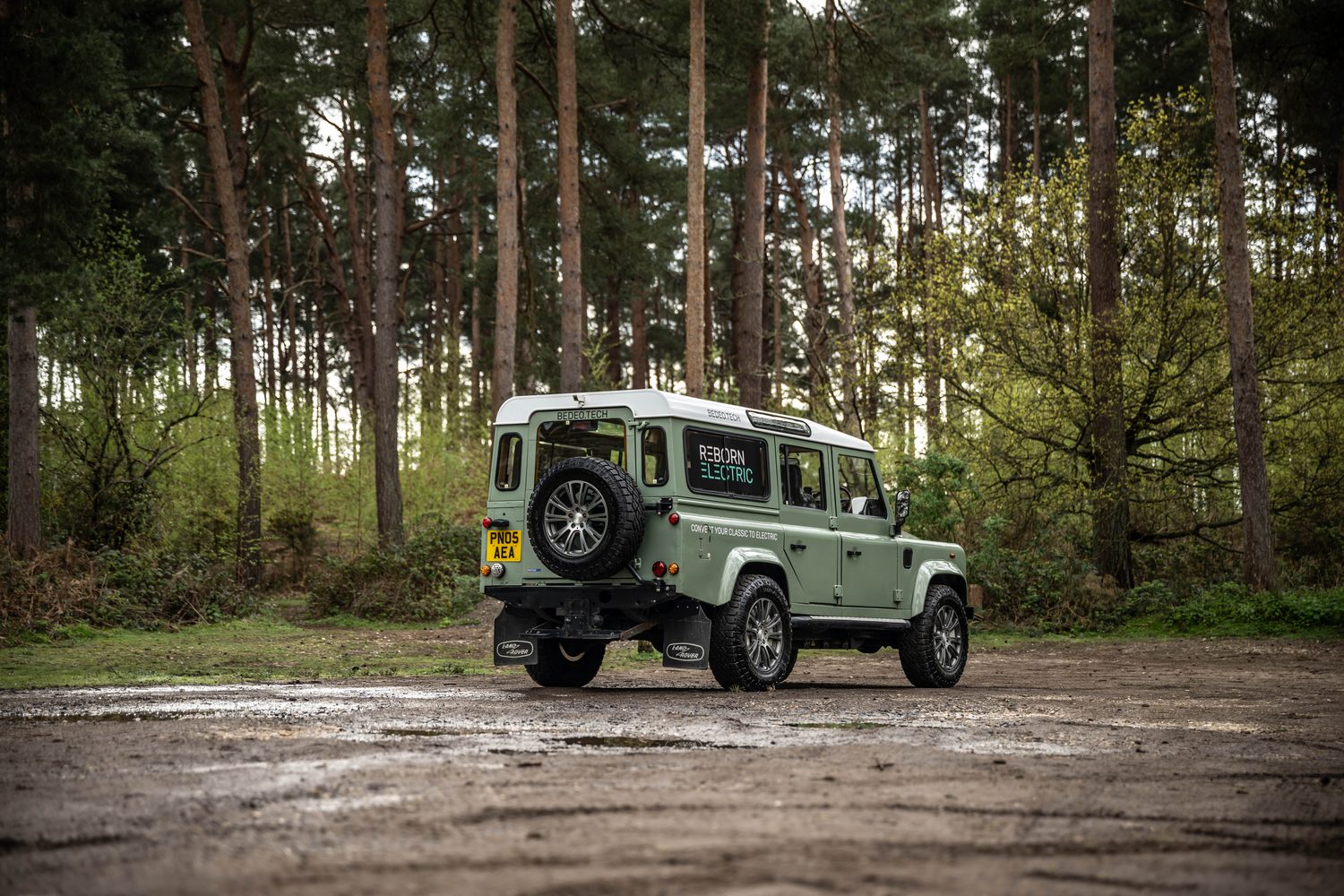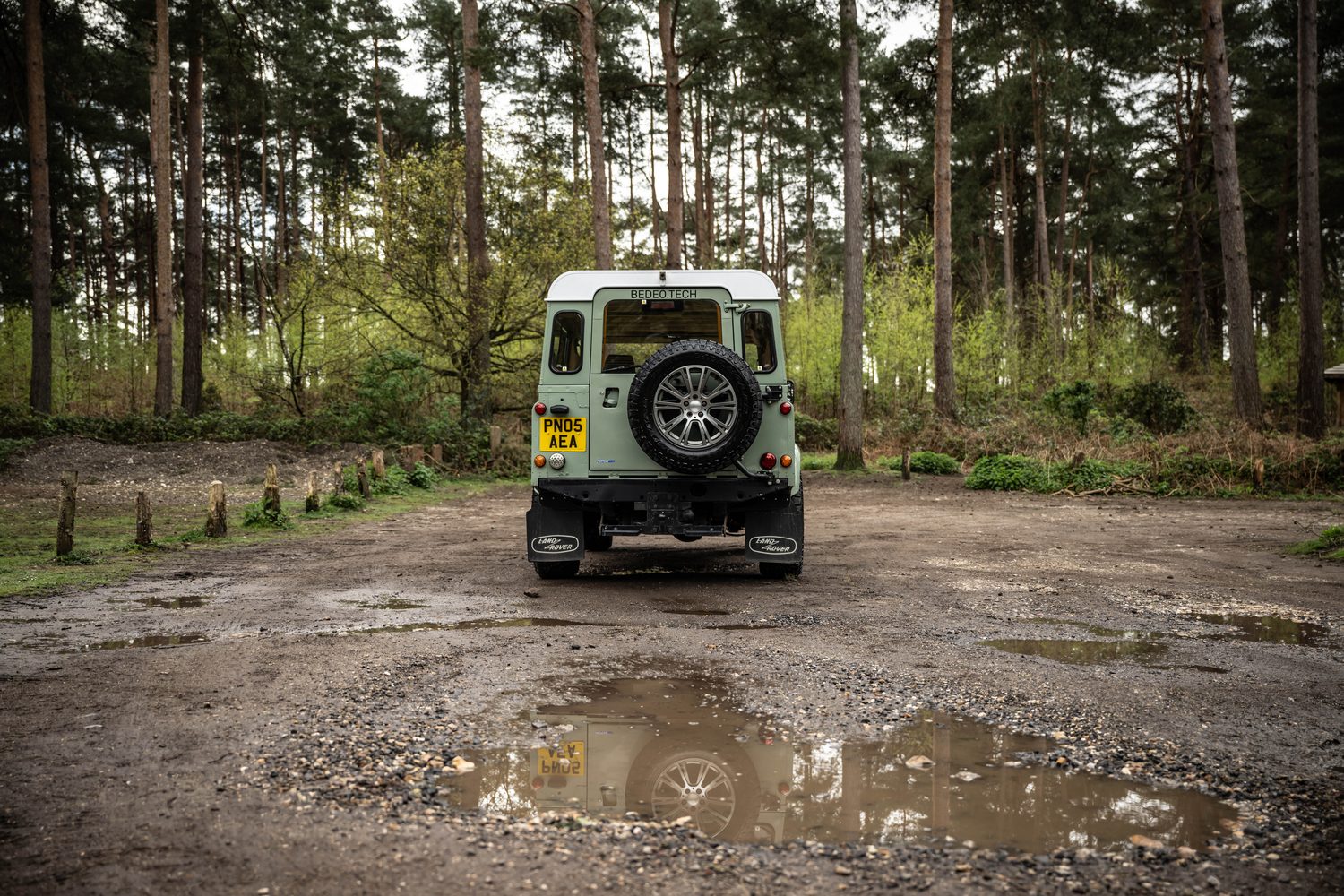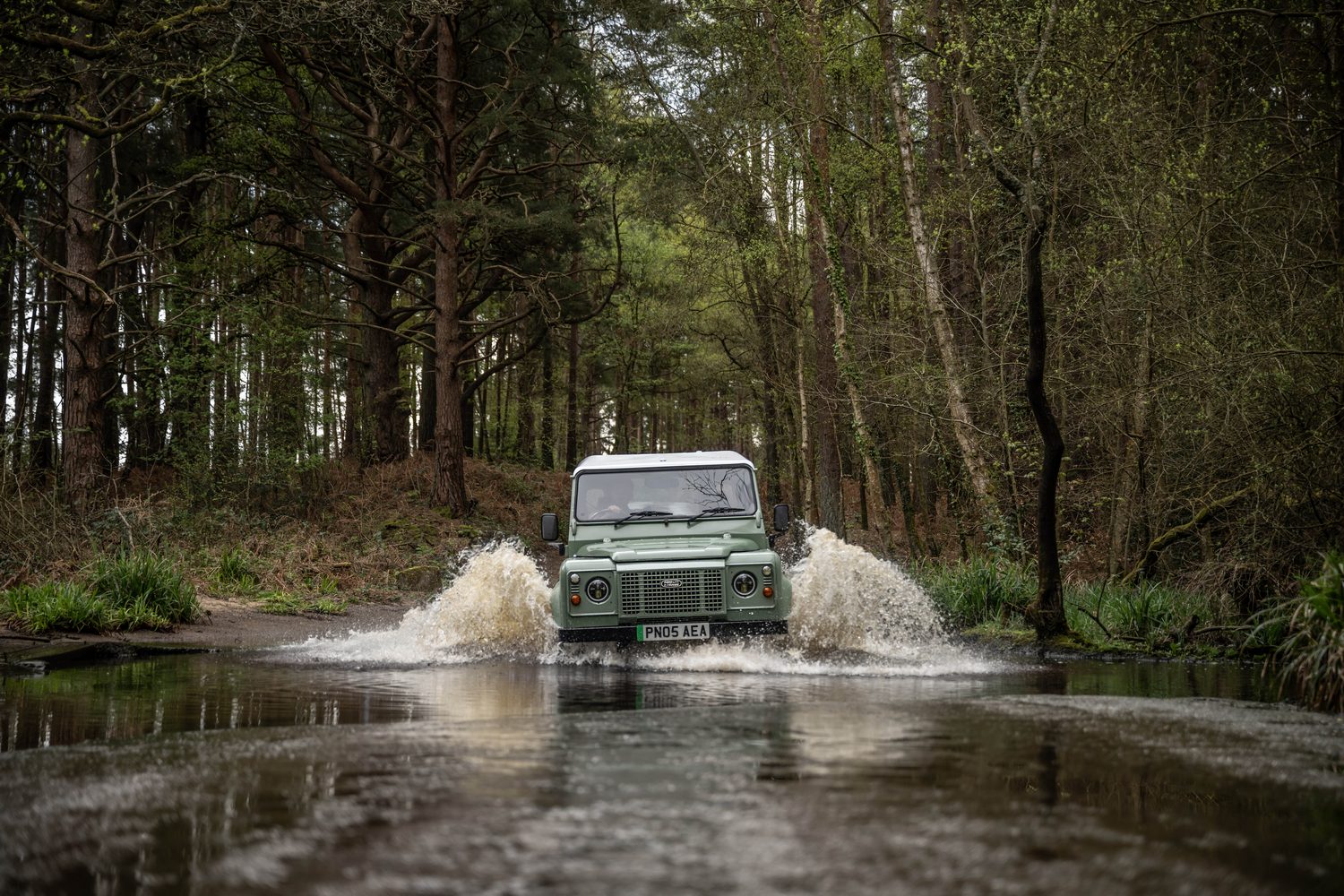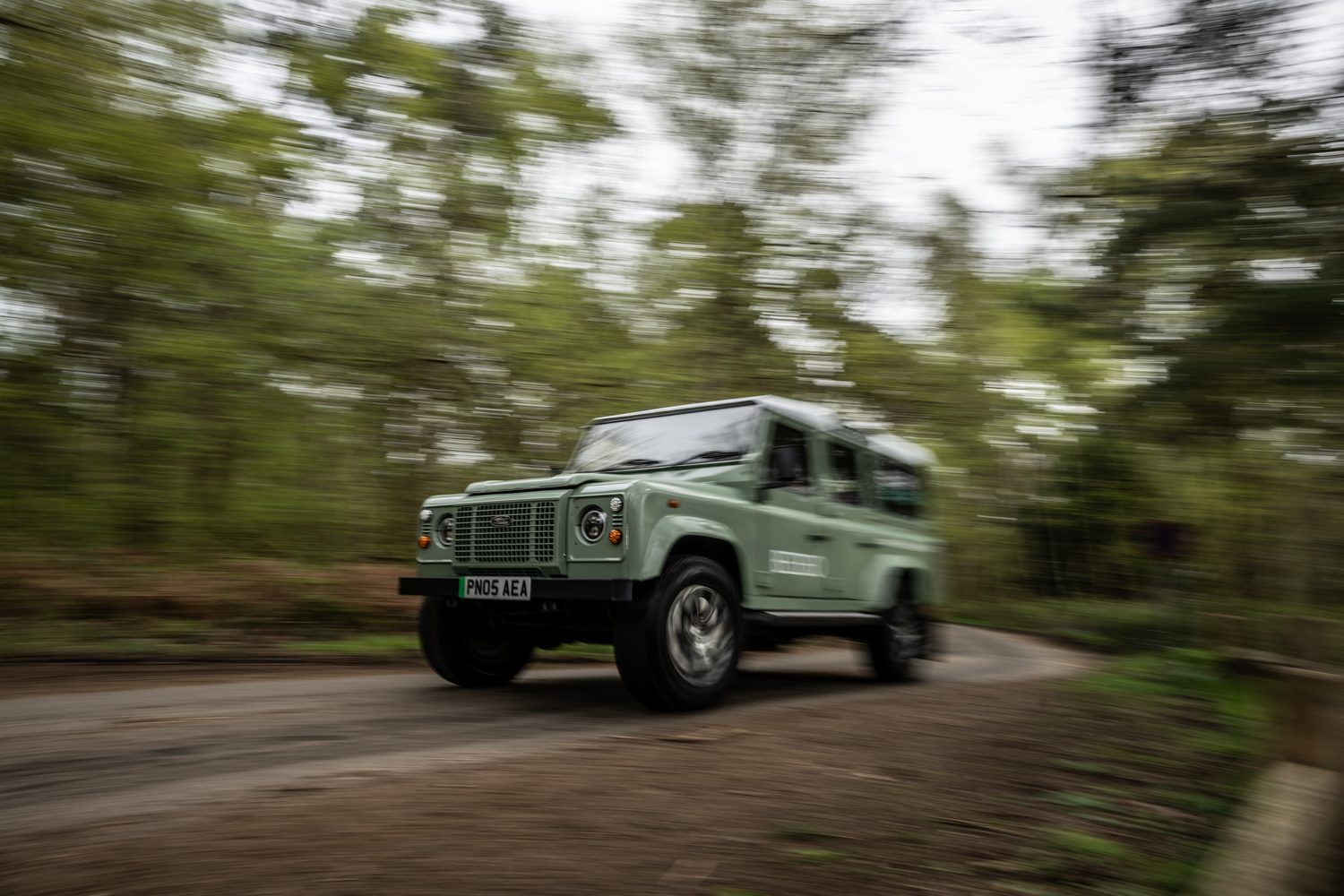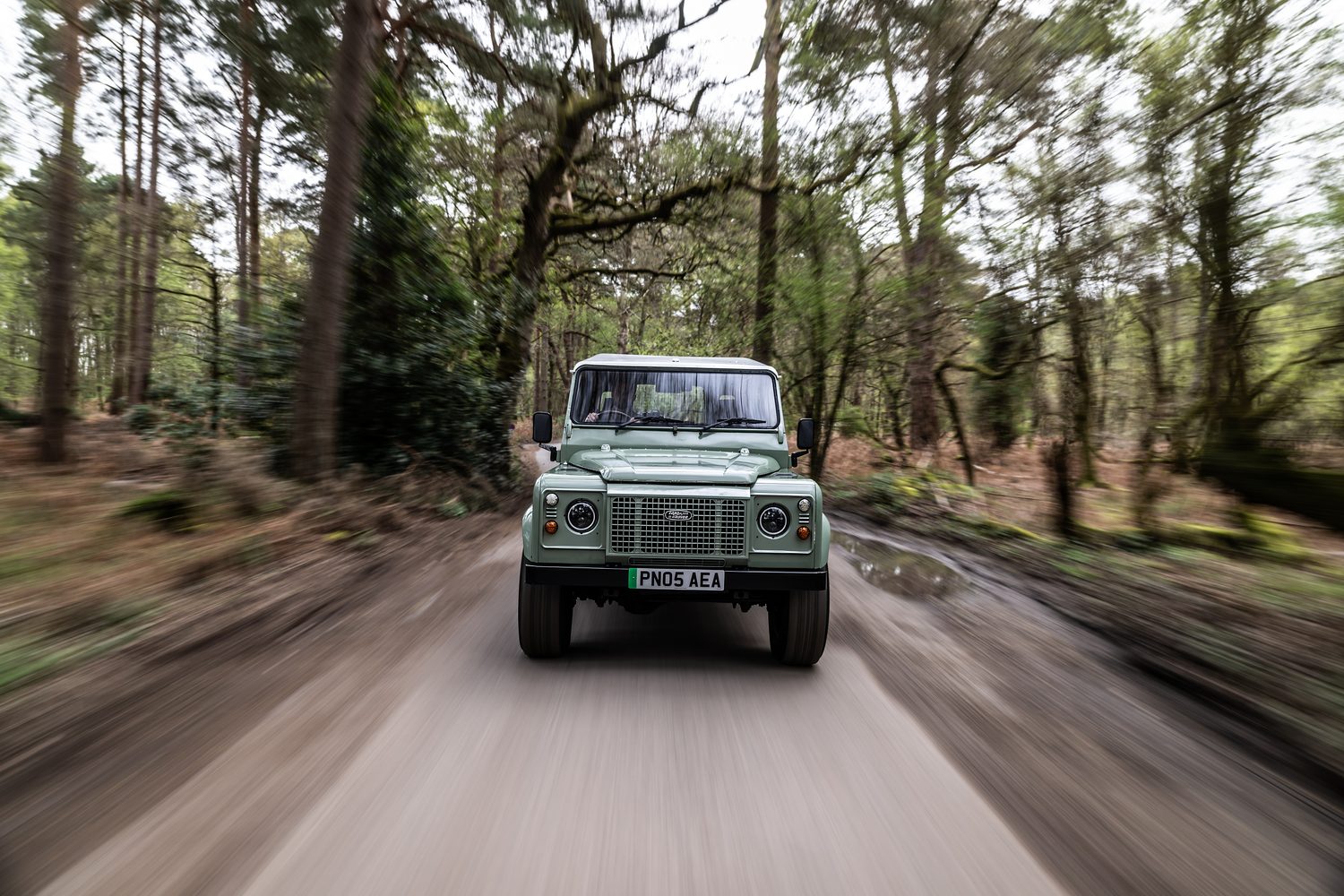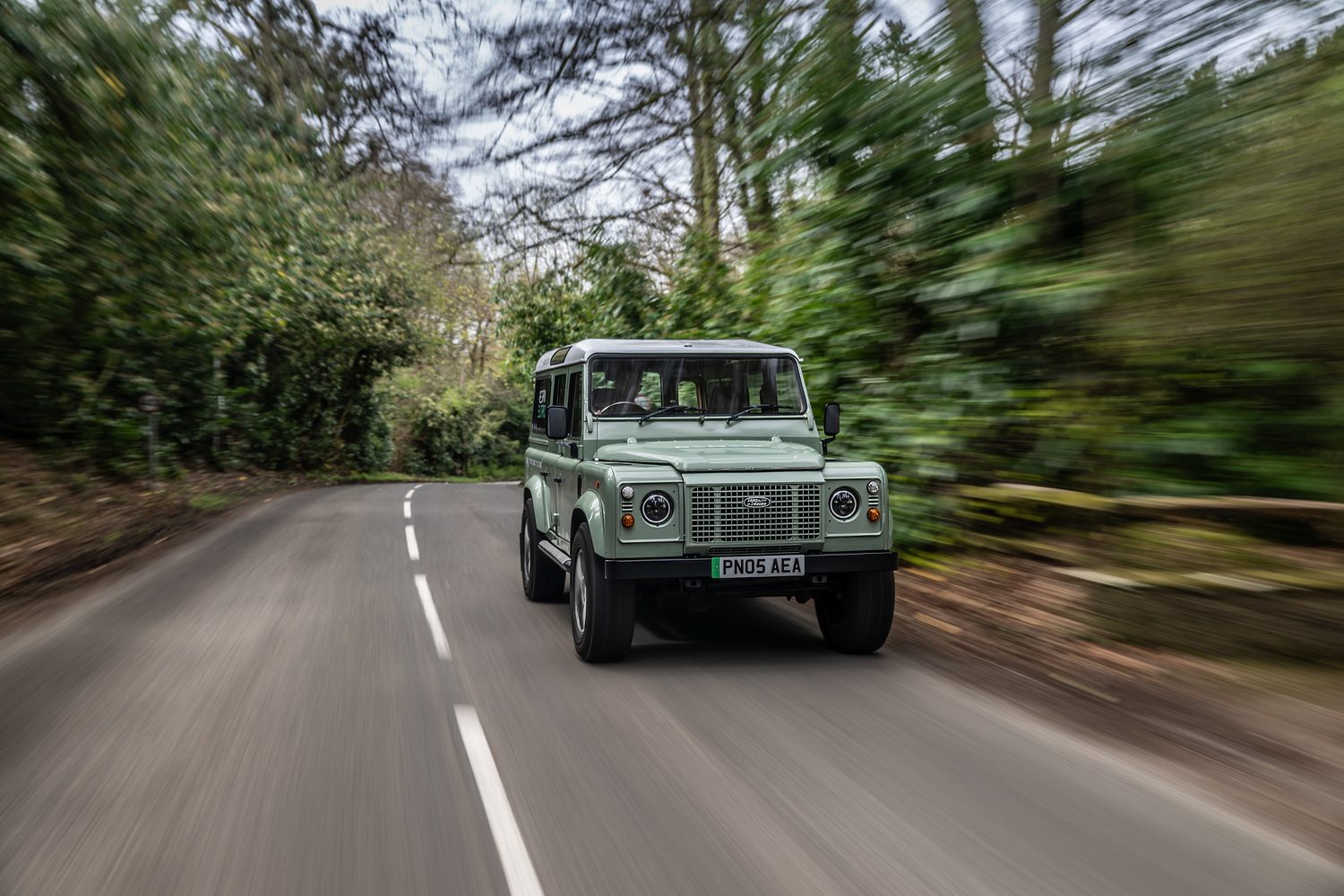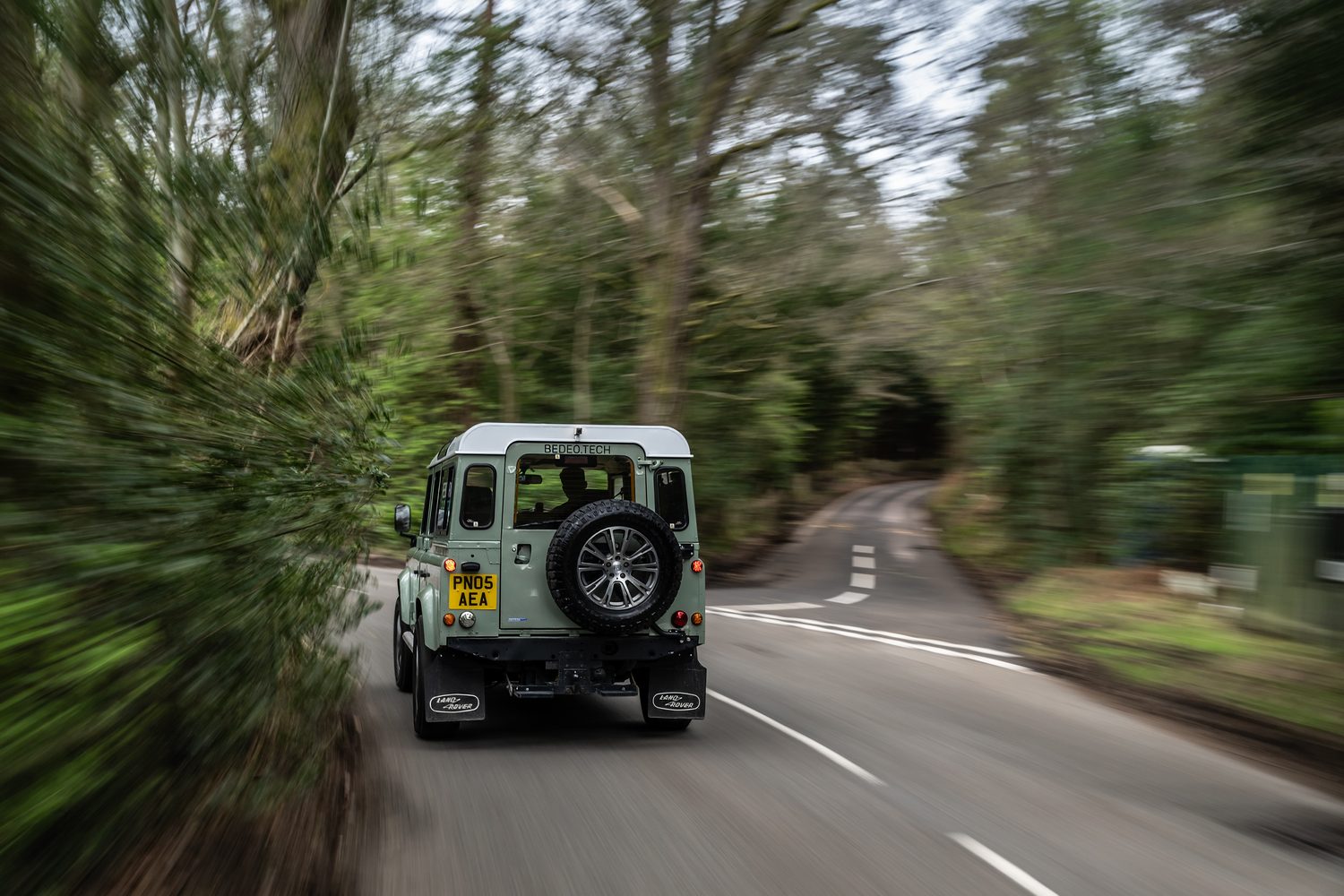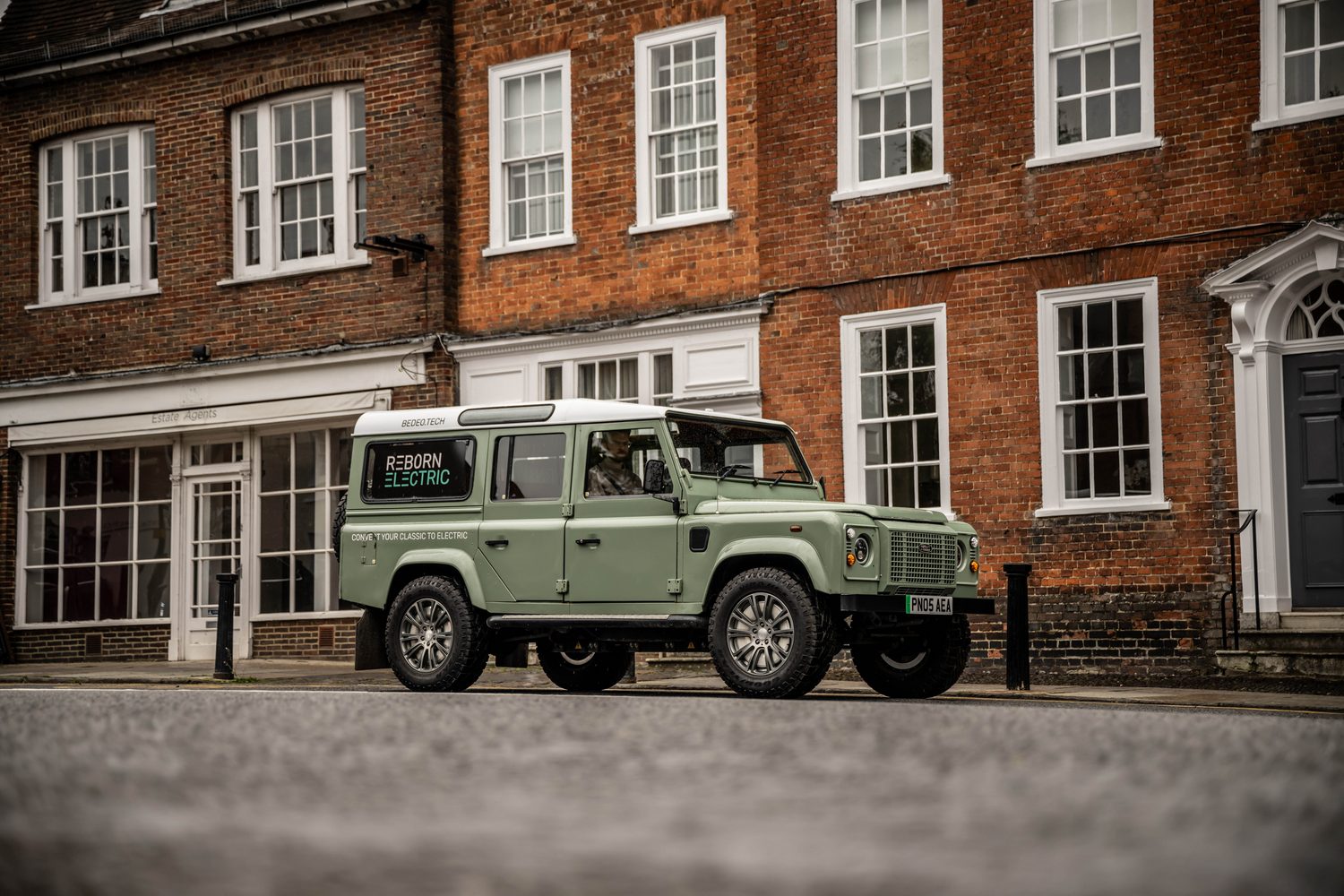We’ve driven plenty of so-called ‘restomod’ electric vehicles - classic cars with batteries and electric motors in place of the original petrol engine - but this is not one of them. Nothing about the Defender you see here has been ‘restored’ in any way. Look closely and you’ll see the rot embedded into the scuttle. But we’re not here to test a car so much as a powertrain, and a clever one at that. UK-based BEDEO reckons it has created the world’s first electric conversion kit for the old Defender, allowing the converted vehicle to weigh much the same as the standard car, but emit zero carbon dioxide or pollutants. The question is, is it a modification worth making, and should you choose it over any other EV conversion?
In the metal
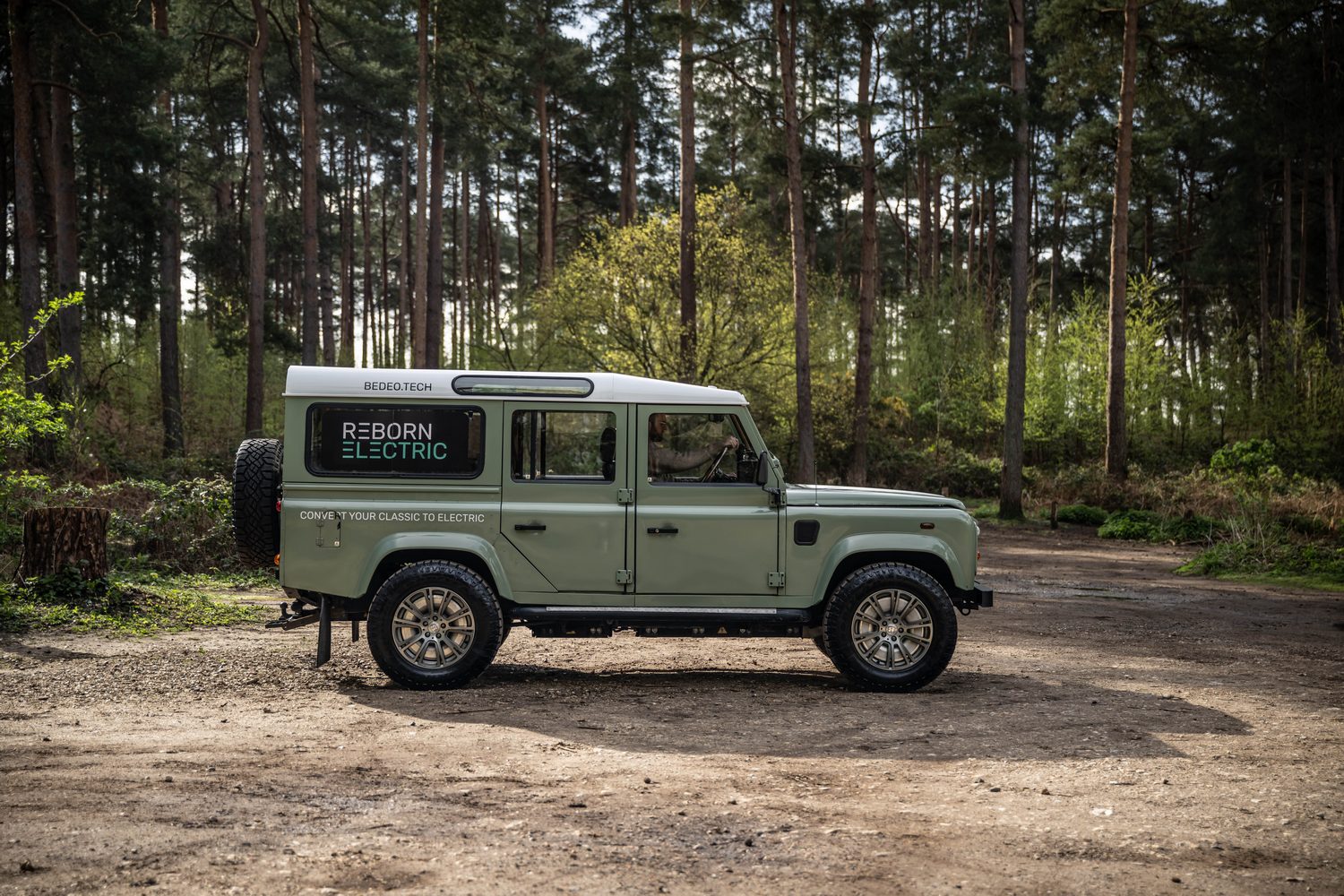
Let’s get one thing clear: you can’t ring BEDEO up and ask for one of their new electric Defenders, because they simply don’t exist. The British company won’t even fit its own powertrain tech to your own Defender for you. Instead, the company is offering this system to garages who want to offer electric conversions for classic Defenders and letting them do all the installation alongside any other work the customer may have asked for. In fact, the Defender test mule we drove is the only conversion BEDEO will ever make at its base in Farnham, just west of London.
And because it’s a test mule and BEDEO isn’t mucking about with new interiors or fancy paint jobs, our test car was an absolute state. There was rot in the scuttle and doors, the wheels were taken from a Brabus and the paintwork was no longer minty fresh. But that’s because it was a 19-year-old Defender with nearly 200,000km on the clock, and they seldom look fresh.
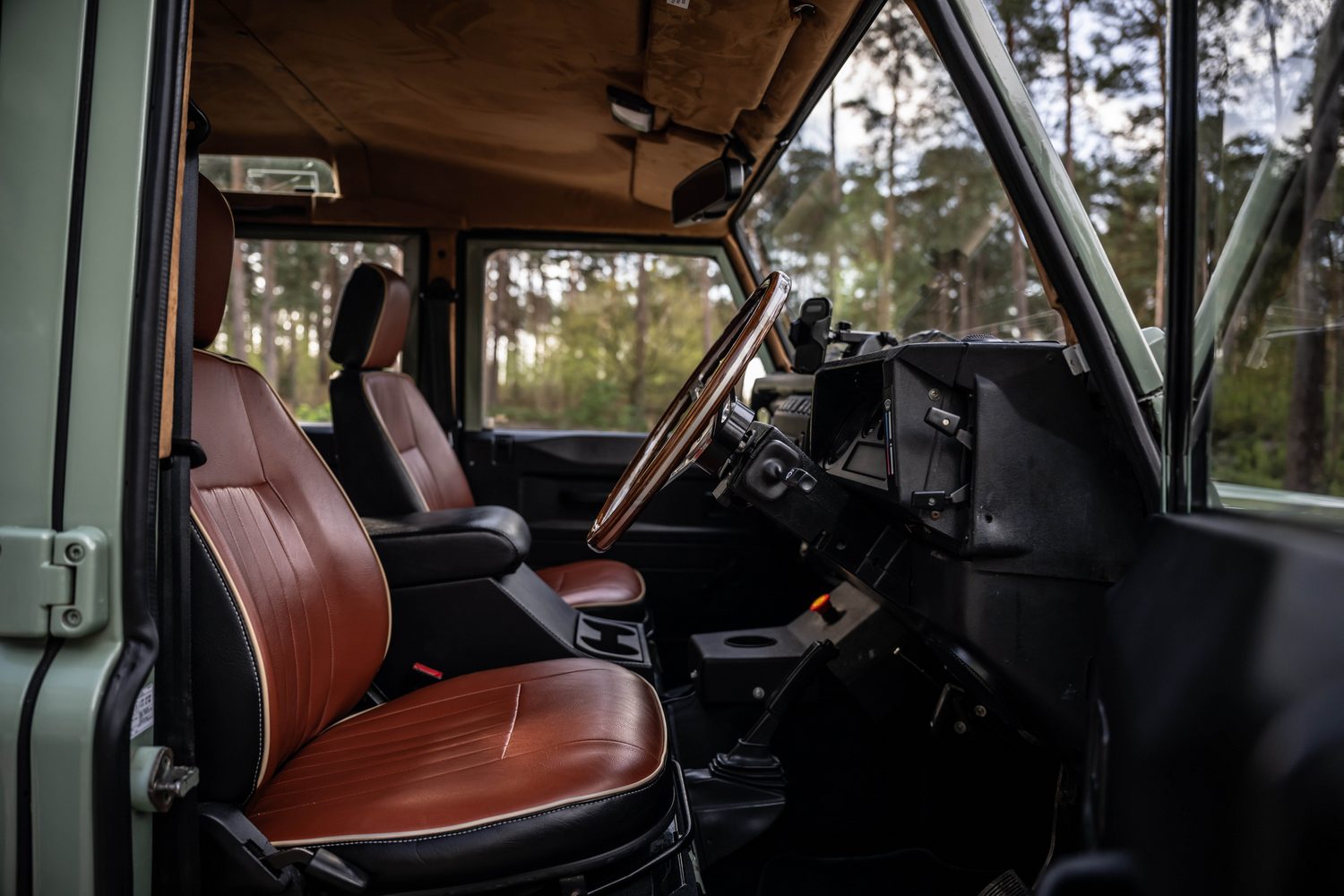
Inside, things were little different, with the standard dashboard, the usual woeful driving position and a horrid aftermarket steering wheel, not to mention all the usual Defender idiosyncrasies. The door handle is inaccessible, the handbrake is down by your left ankle and there’s nowhere for your right arm. Purgatory would be more comfortable. But that’s because it’s a Defender, and BEDEO hasn’t touched any of that stuff.
In fairness, not everything in there is identical to what you’ll find in a diesel Defender. For a kick-off, BEDEO’s conversion sees the standard gearbox removed (much to the relief of anyone who ever drove the 2.2-litre diesel Defender with a manual gearbox, no doubt) and some buttons for drive selection installed on the dash. Some of the gauges have changed, too, with a state-of-charge gauge in the instrument cluster and some other EV-related displays living in the rear-view mirror. Overall, though, it’s conventional Defender fare.
Even the installation of a big battery hasn’t changed the practicality credentials, because the four motors fit inside the alloys, and take up little more space than a conventional wheel hub. Although there are some central control electronics and a 75kWh battery, that all fits into the engine bay or under the chassis rails, making no difference to interior space or ground clearance.
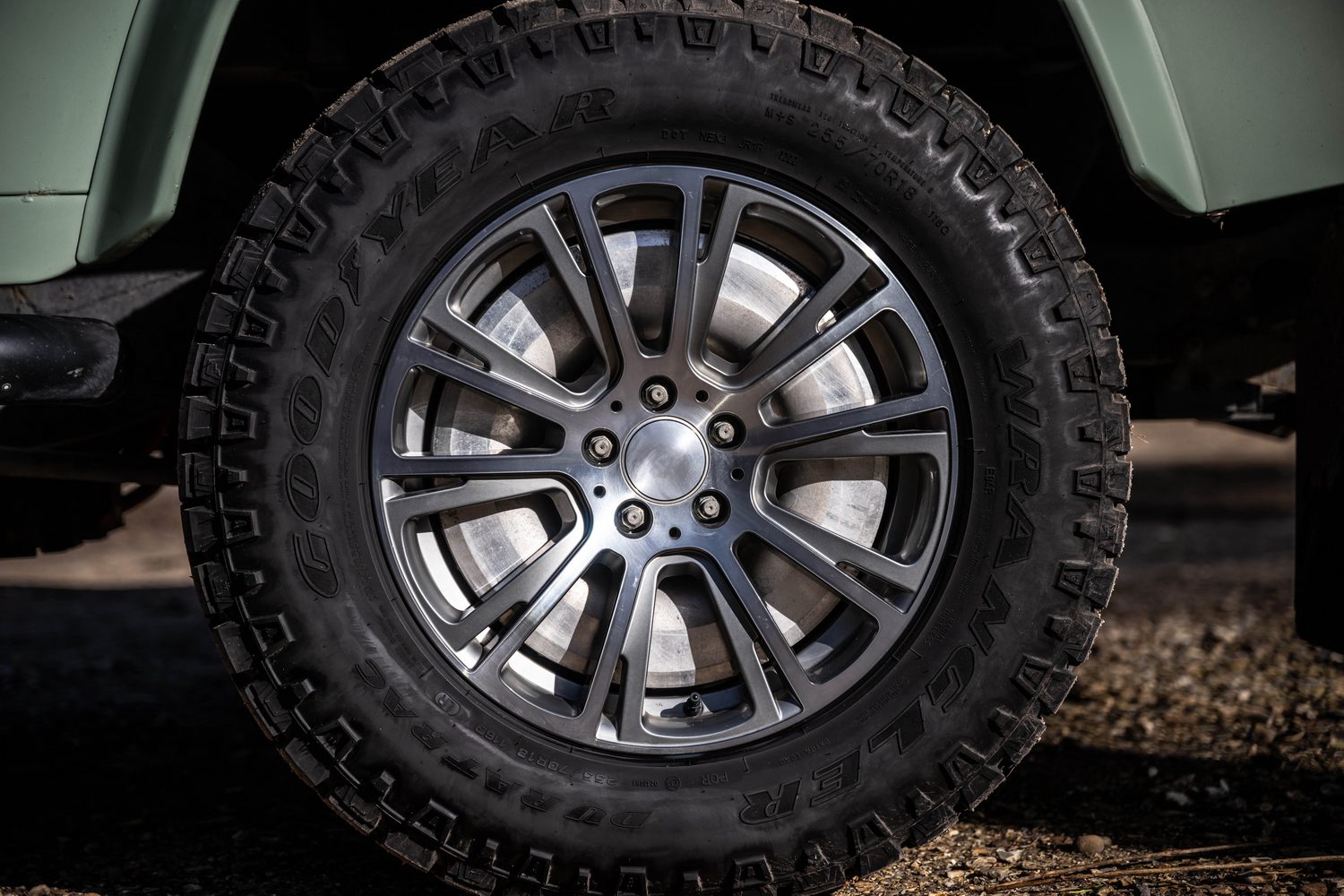
For customers and owners, that means the car remains a blank canvas. Those who love their current Defender but want a cleaner, greener and more reliable propulsion system can leave their car more or less as is, while those looking to restore a ratty old car can do so to their heart’s content.
Driving it
BEDEO’s compact motor technology allows the four electric motors in the Defender to slot in behind the wheels, looking rather like overgrown drum brakes. And with brakes integrated into the motor units, they take up no more room. In fact, they take up so little space that BEDEO didn’t even have to change the Defender’s suspension to cope with the bulk. And with just two cables heading from each unit to the main nerve centre, it’s a surprisingly simple system.
So simple, in fact, that BEDEO plans to install it in other suitable classics, and not just the Defender. After all, the theory is that you don’t have to have four motors, and you could get away with just two on the front or rear axle. Either way, BEDEO expects the whole kit to weigh about the same as a conventional petrol or diesel powertrain, as there’s no need for heavy drive shafts, gearboxes or anything like that.
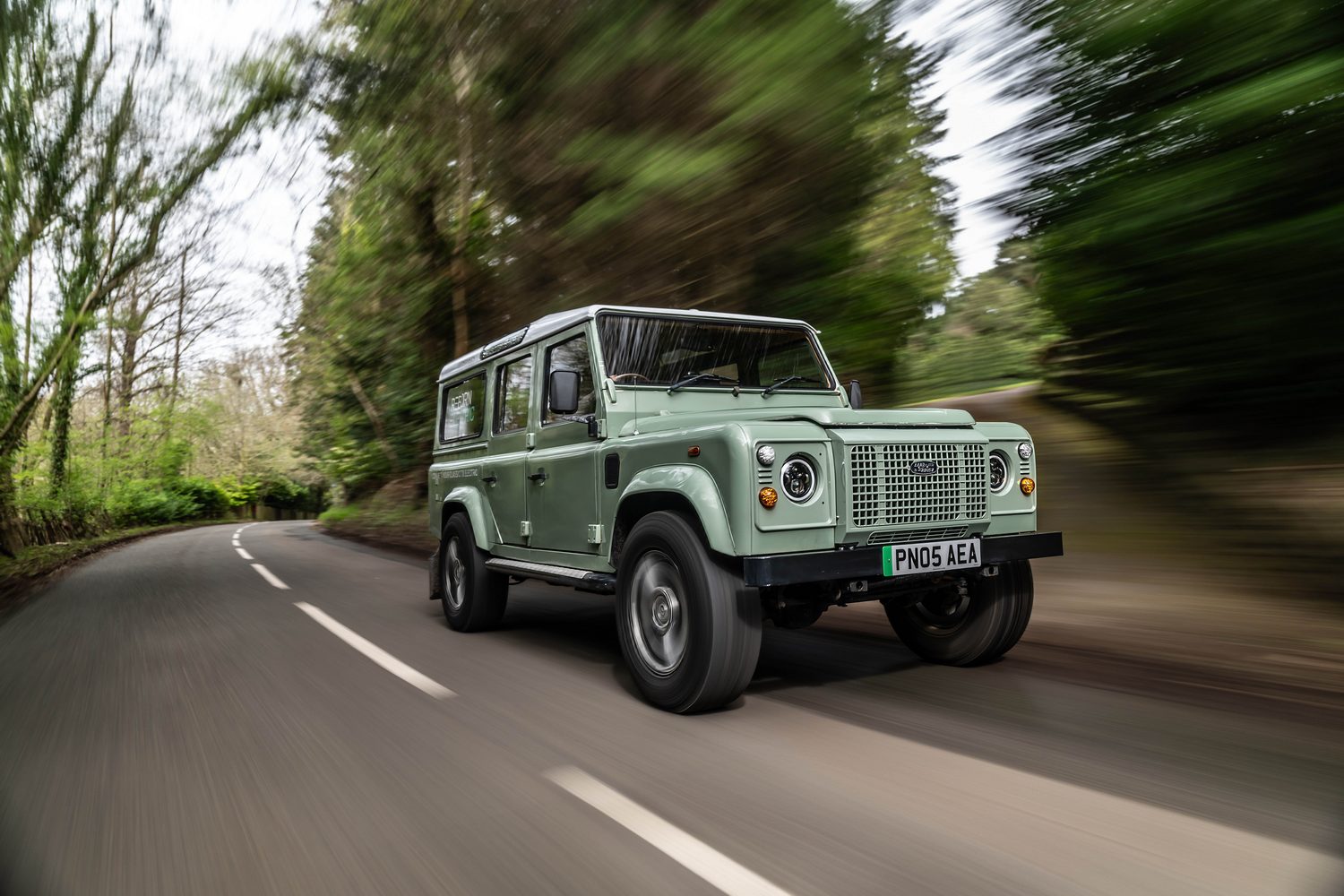
But while BEDEO identifies alternative hosts for its system, the Defender’s is currently the sole offering. In this test car, the 75kWh battery (mainly under the floor, although there are some batteries in the engine bay, too) permits a range of around 250km on a single charge, which is acceptable without being spectacular.
At least it means charging won’t take too long with the option of 50kW DC charging available to those who expect to use public chargers now and then. As a result, a 10-80 per cent charge should take a little over an hour, making the system usable even on longer drives. Not that you’ll want to do too many of those in a Defender...
That’s because once the battery is fully charged, the electric Defender proves surprisingly familiar on the road. You kind of expect the conversion to change the experience completely, but it doesn’t. BEDEO has touched nothing except the powertrain, so the ride is still bouncy and unrefined, the body still has the aerodynamic properties of an East German apartment block, and the soundproofing is still non-existent.

That said, there’s no requirement to stir gravel to change gear, and the distressing noise of the van engine is gone, which is all to the good in our book. It performs reasonably well, too, which will be a new experience for most Defender owners, and the delivery is very smooth. However, it still isn’t exactly fast, and BEDEO has admitted it couldn’t give the car as much power as it could have because the unsophisticated chassis just can’t cope with it.
Nevertheless, while the BEDEO-converted car has most of the character of the Defender, it does limit some of the standard car’s shortcomings a bit.
Yet the Defender was born as a 4x4, not a road car, and it’s off-road that the BEDEO conversion really shines. Where an original Defender would be clunky and noisy and agricultural (OK, more clunky and noisier and agricultural), the BEDEO system gives it a smoothness that makes it perfect on a green lane. Not only are ramblers less irritated by the noise, but there’s no need for delicate clutch control on rough surfaces or for a gutsy stab of the accelerator pedal every now and then. Instead, you can modulate the power with your right foot alone and it feeds in smoothly, allowing you to go as fast as necessary and as slow as possible all at once. You don’t even have to contend with lag from the transmission, so uptake is almost instant.
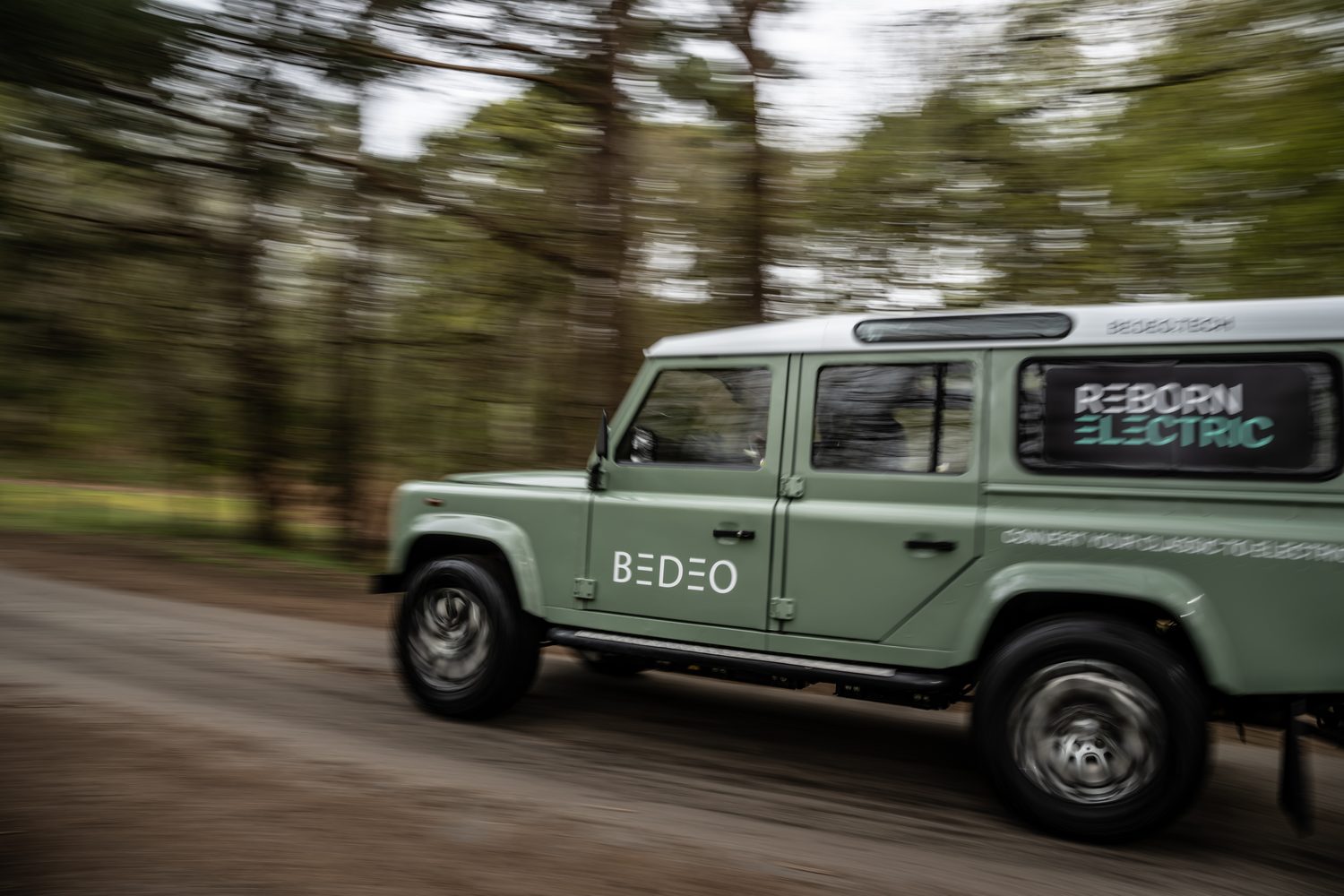
That makes the Defender arguably even better than it would ordinarily be, and BEDEO is adamant that the in-wheel motors rob it of no fording capability or all-terrain robustness. The company says it tests its motors to similar standards as the car makers do, so there’s no need to worry unduly about water ingress into the motor assemblies or anything like that. And because of where the battery is positioned, you get the same ground clearance as a diesel Defender.
What you get for your money
Because BEDEO will never sell the in-wheel motor kit directly to customers, the company is quite coy about pricing. After all, its customers - the workshops who will fit the system - don’t want customers to know exactly how much profit they’re making. So, there’s no word on how much the BEDEO system will cost at this stage, and customers will have to speak to their installer to get a price.
Summary

The BEDEO in-wheel motor technology is impressive in its way, and it suits the Defender well, allowing for easy and fuss-free off-roading. With fewer drivetrain components, it’s smoother and more direct than some electric conversions, and it has minimal impact on the car’s driving characteristics. But while that makes the BEDEO system one of the better conversion kits out there, it doesn’t have much in the way of character or differentiation, and that’s a bit of an issue. Unless you understand (or care about) the minutiae of the in-wheel system, you probably won’t spot much difference between this powertrain and any other electric conversion.

